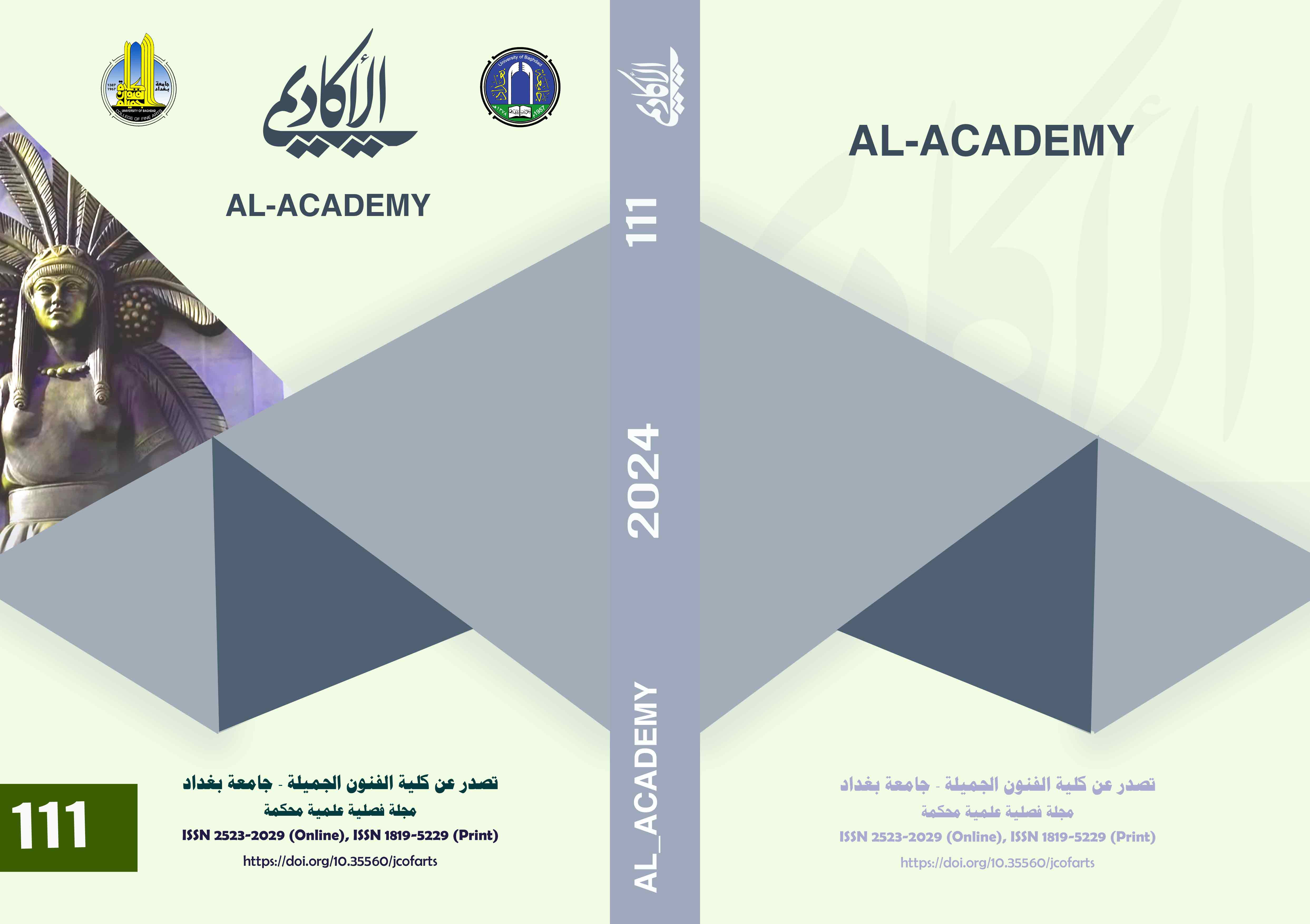استثمار أسلوب التجاور غير المنتظم لتوليد أفكار إبداعية في تصميم الملصق الإعلاني: دراسة تجريبية
DOI:
https://doi.org/10.35560/jcofarts1288الكلمات المفتاحية:
التفكير الإبداعي، التجاور غير المنتظم، الملصق الإعلاني، تعليم التصميمالملخص
يعد التصميم من المجالات الإبداعية، لذلك تلجأ المؤسسات التعليمية لإعداد مصمم قادر على التفكير الإبداعي باستخدام أساليب تدريسية غير تقليدية، وبالتالي تنمية قدرات الطالب ومهاراته. ركزت هذه الدراسة التجريبية على تطبيق أسلوب التجاور غير المنتظم Random Juxtaposition لتوليد الأفكار والحصول على حلول إبداعية في مجال تصميم الإعلانات. وتحقيق مبادئ التفكير الإبداعي: الطلاقة، المرونة، والأصالة. تمت التجربة على عينة من الطالبات بقسم التصميم الجرافيكي. من خلال دمج كلمتين (اسم + صفة) بطريقة غير منتظمة، وإيجاد العلاقات بينها باستخدام الخرائط الذهنية. تلخصت النتائج: يعد أسلوب التجاور الغير منتظم من الأساليب الفعالة لتوليد الأفكار التي تحقق مبادئ التفكير الإبداعي - تساهم الخرائط الذهنية في الحصول على أفكار عميقة لا متناهية - استخدام أساليب غير تقليدية يساعد على كسر الجمود الإبداعي - التنوع في أساليب التدريس يخلق الحماس داخل الاستديو ويكسب الطلاب مهارات جديدة. وحلول تصميمية فعالة. توصي الدراسة لإجراء المزيد من الدراسات التي تركز على توظيف أسلوب التجاور الغير منتظم في مجالات الفنون والتصميم.
المراجع
Abdulraof, T. (2015). Mind Maps and Learning Skills: Your Way to Build Smart Ideas. Cairo: Arab Publishing Group.
Ahmad, N. (2021). Creative Thinking As an Approach to Design Innovative Units Associated with Surrealism Art. International Design Magazine. 11 (6), 189 – 198.
Alfakhri, S. (2018). Psychology of creativity. Academic Book Center.
Aljaf, S. (2022). The Effectiveness of The Similarity Strategy in Developing Creative Thinking Among Students of The Department of Art Education in The Subject of Handicrafts. Journal of the College of Basic Education. 28 (114), 250 – 272.
Alsabag, A. & Alshahi, J. (2018). Brainstorming Techniques and Their Impact on Addressing Obstacles to Creative Thinking. Journal of Police Thought. 27 (107), 19 – 56.
Balakrishnan, B. (2021). Exploring The Impact of Design Thinking Tool Among Design Undergraduates: A Study on Creative Skills and Motivation to Think Creatively. International Journal of Technology and Design Education, 32(3), 1799–1812.
Behansi, A. (2019). The Art of Advertising: Managing Influence and Appeal. Egypt: Book World.
Craft, A. (2001). An Analysis of Research and Literature on Creativity in Education. Qualifications and Curriculum Authority.
Doyle, A. (2018), Creative Thinking Definition, Skills, and Examples.
Eldin, D. (2019). Mind Map and Their Role in Developing Creative Thinking: Case Study Arts & Designs Students. 17, 169 – 192.
Gafour, O. & Gafour, W. (2020). Creative Thinking Skills – A Review Article. Research Gate Publication.
Hargrove, R. (2008). Creating Creativity in The Design Studio: Assessing The Impact of Metacognitive Skill Development on Creative Abilities.
Henriksen, D., Richardson, C., & Mehta, R. (2017). Design Thinking: A Creative Approach to Educational Problems of Practice. Thinking Skills and Creativity. 26, 140–153.
Jrwan, F. (2013). Creativity: Concept, Criteria, Components. Oman: Dar Al-Fikr Publishers and Distributors.
Khasawneh, F. (2015). Creative Thinking Process in Design. 42(1). 1217-1227.
Kilicaslan, H. & Ziyrek, B. (2012). A Research about Creativity in Design Education. 46, 1461-1464
Kittelstad, K. (2020). Juxtaposition Examples and Definition Explained. Article.
Koestler, A. (1964). Creativity: The Juxtaposition and Integration of Disparate Categories: The Act of Creation. 147(3653), 37-38
Lucero, A., Daisgard, P., Halskov, K., & Buur, J. (2016). Designing with Cards. Springer International Publishing. 75-95.
Mahmood, J. (2020). Activating The SCAMPER Method to Develop Creative Thinking in Industrial Design. Journal of Applied Arts and Sciences. 7 (4), 143 – 162.
Mulet, E., Royo, M., Chulvi, V., & Galán, J. (2017). Relationship Between The Degree of Creativity and The Quality of Design Outcomes. DYNA. 84(200), 38–45.
Ni, C., Lo, F., Lyu, Y., & Lin, R. (2022). Collaborative Creativity in Design Education: A Case Study of The Design Sketch Course. Creative Education. 13(05), 1600–1615.
Sarkar, P., & Chakrabarti, A. (2011). Assessing Design Creativity. Design Studies. 32(4), 348–383.
Schweitzer, C. (2016). Juxtaposition or “The Power of Two”: A Tribute to Donald Capps in Conversation with Oliver Sacks. Postoral Psychology. 65, p835-848.
Wise, & Ferrara (2015). Creativity and Education: Comparing the National Curricula of
the States of the European Union and the United Kingdom. British Educational Research Journal. 41, 30-47.
التنزيلات
منشور
إصدار
القسم
الرخصة
الحقوق الفكرية (c) 2024 Shuruq G Nahhas

هذا العمل مرخص بموجب Creative Commons Attribution 4.0 International License.













